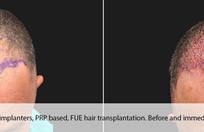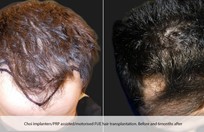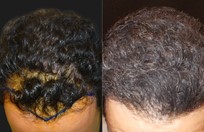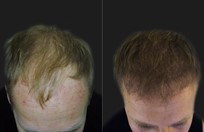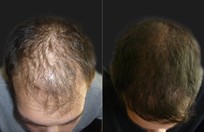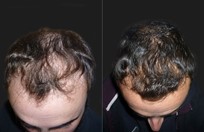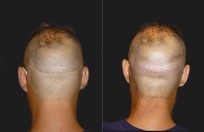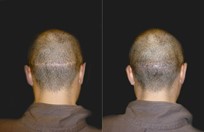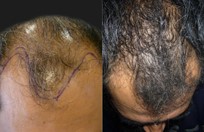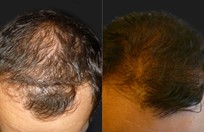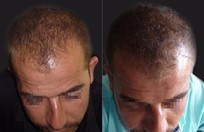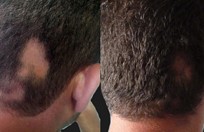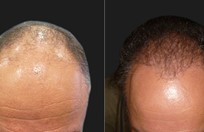Hair Transplantation
By the age of 50, about 50% of men and a substantial number of women are affected by hair loss, much of which is hereditary. Conservative treatment by minoxidil or finasteride/dutasteride and photo-bio-modulation with LowLevelLaserTreatment (LLLT), helps the hair regrowth. The use of stem cells for the hair regeneration and the PRP may change the treatment of the hair loss for ever. The PRP is also the most promising treatment at the alopecia areata.
Flap surgery used to be done at the past and is performed in a surgical setting.
Hair transplantation in now days is a minimal invasive technique and can achieve 50% or more density. FUE (Follicular Unit Extraction) is the "cutting edge" technology. It is done under oral sedation/local anesthesia, has no scars, no pain and requires 4 days for recovery. Hundreds of micro-hair roots, each of them containing 1-3mini shafts (grafts) will be transfered from a donor site on the back or the sides of the head. The Choi implanters/PRP assisted/motorized FUE uses a micro-robotic arm combining the blood stem cells with microsurgery.
Micro-hair transplantation (FIT or Follicular Isolation Technique) uses oral sedation/local anesthesia in an outpatient basis. The donor site leaves a thin scar 1mm of width. It will be obvious only after shaving the hair and even then we can make a medical tattoo (micro-tricho-pigmentation) to cover it.
In both techniques, the grafts will be randomly implanted in the bald or "thinning area" of the head. 1-1.5 months after, the transplanted hair will fall out. They will be replaced 3-6 months after, when the new hair grows in. To achieve sufficient density, 2 or more sessions may be required.
